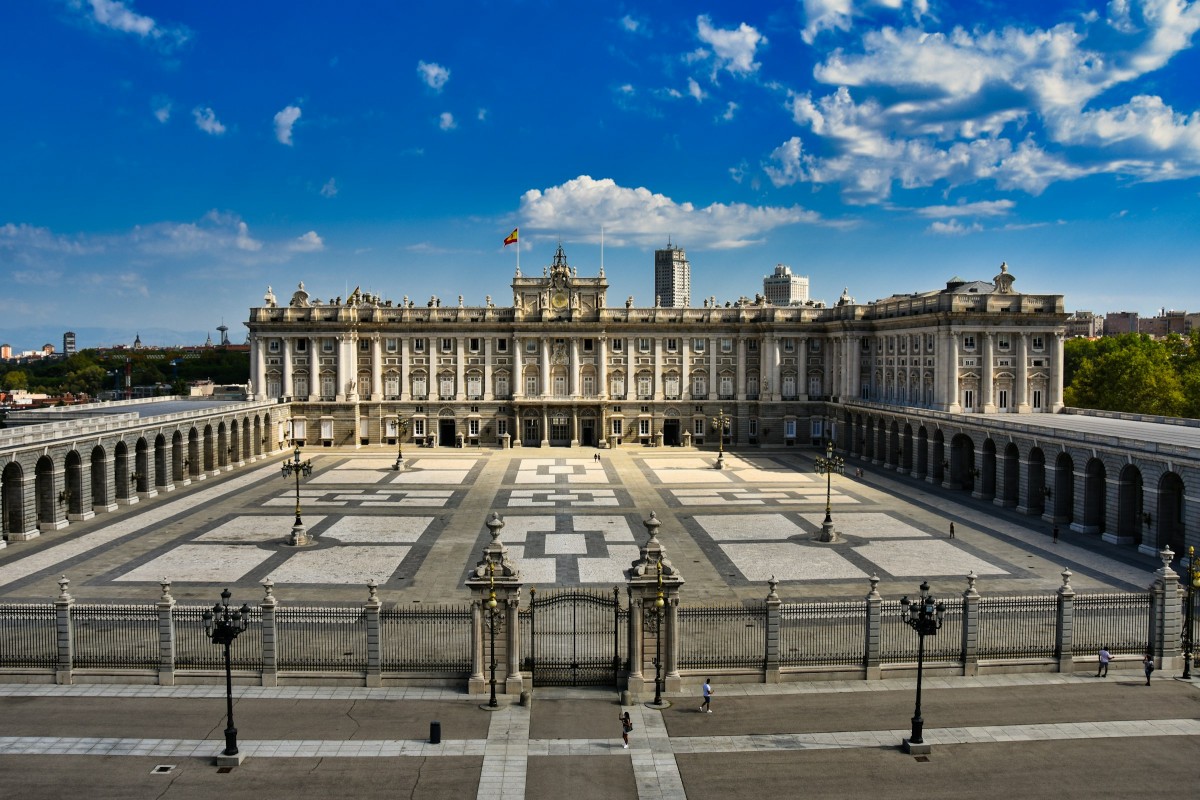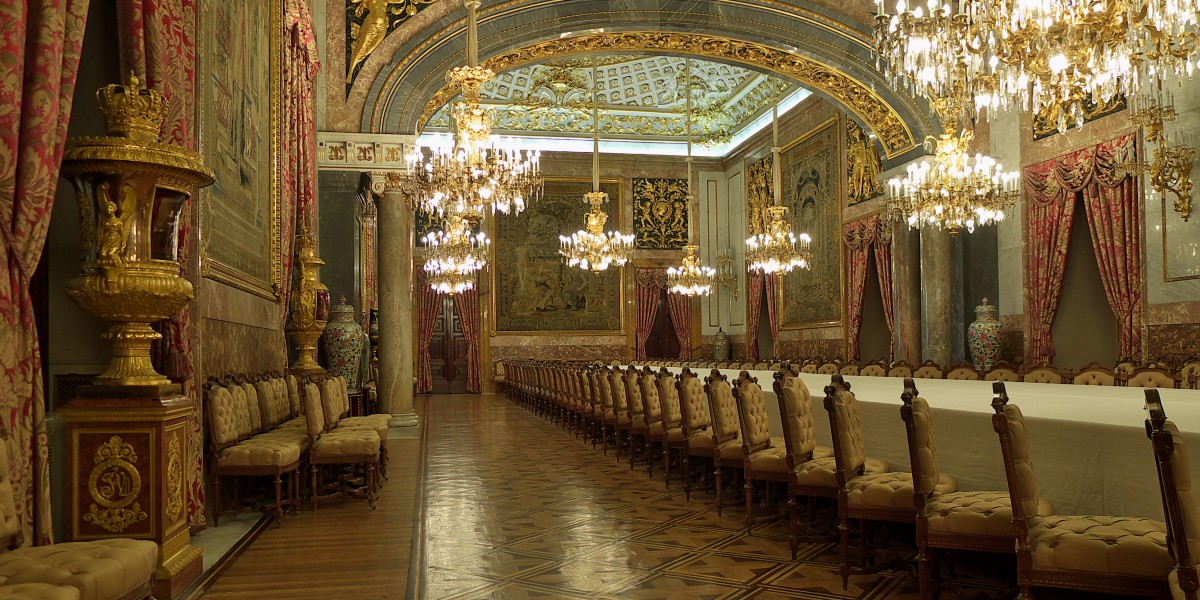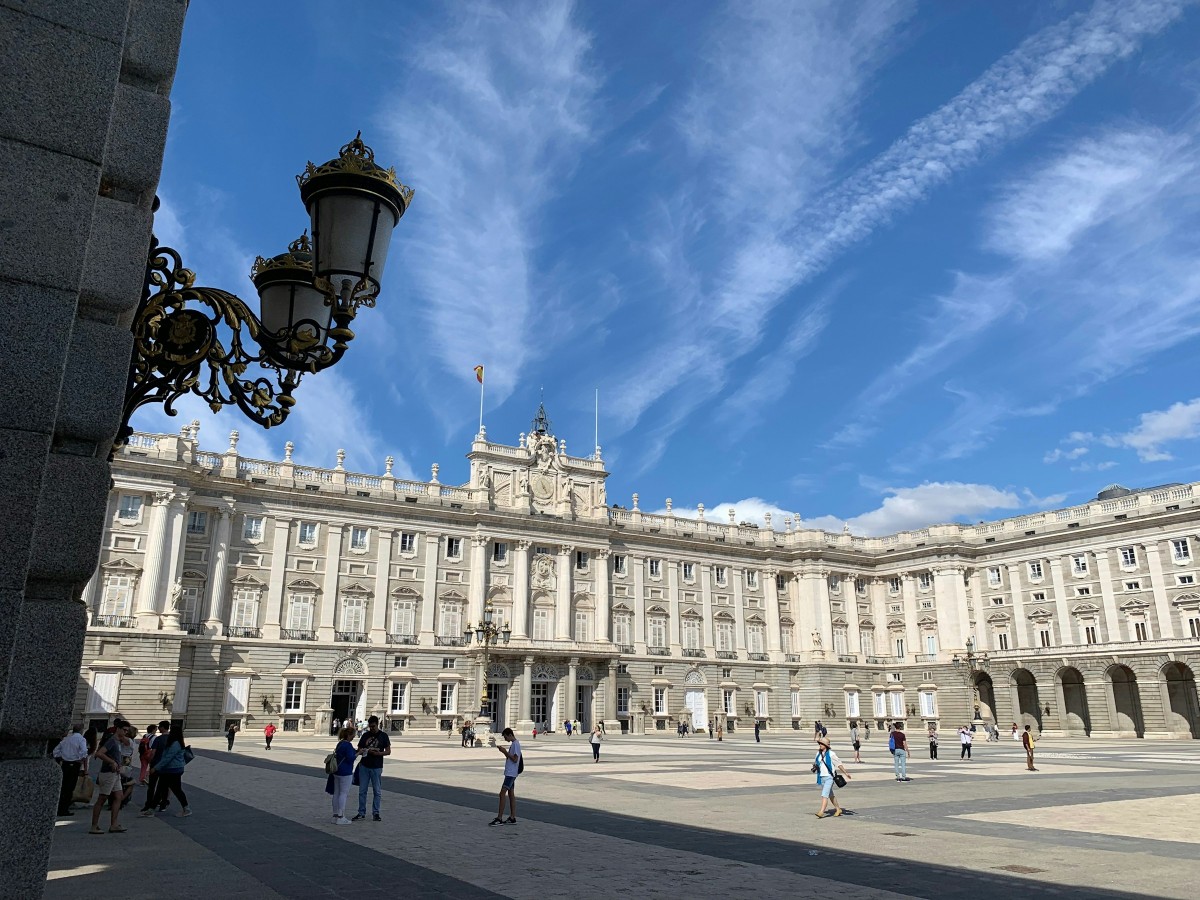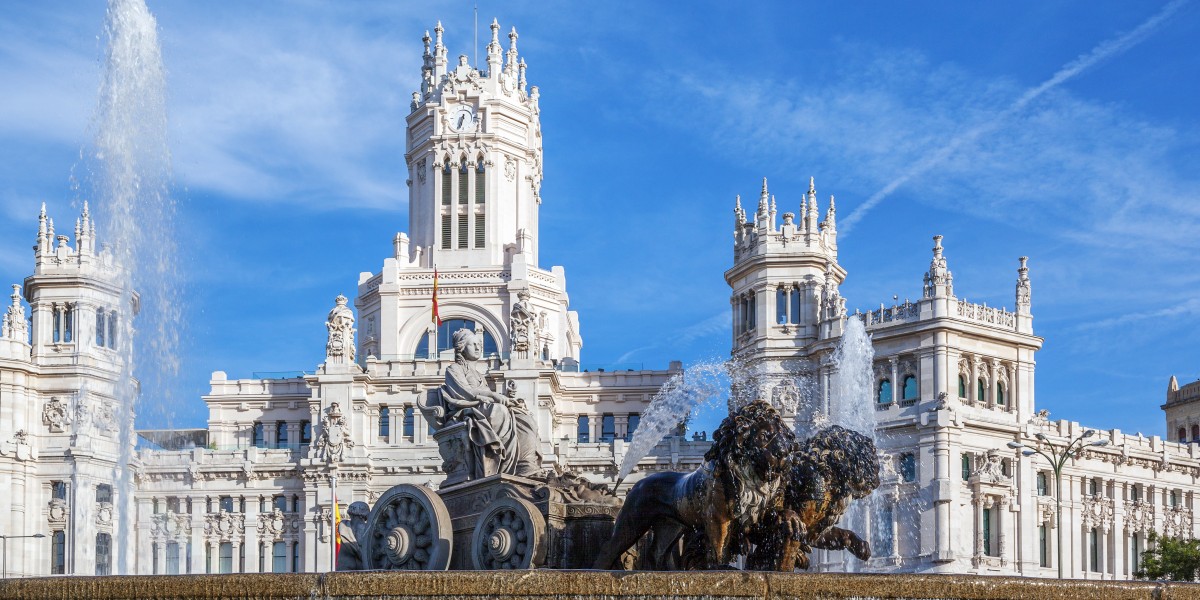
The Royal Palace of Madrid is a gem in the Spanish capital and the largest palace in Western Europe, twice the size of iconic landmarks like Buckingham Palace and the Palace of Versailles.
Although the Spanish Royal Family does not reside here, it remains the official residence of the King of Spain and serves as a showcase of Baroque art and architecture. With over 3,000 rooms, it houses masterpieces by artists such as Caravaggio, Velázquez and Goya. Discover everything you need to know about the Royal Palace of Madrid.
History of the Spanish Royal Palace
The site of the Royal Palace originally housed a 9th-century fortress, later transformed into a palace by the Kings of Castile. After a devastating fire in 1734, King Philip V commissioned the construction of the current palace as a symbol of the Spanish monarchy’s power and grandeur. It was designed by architect Filippo Juvarra and completed by his disciple Juan Bautista Sachetti.
The construction of the Royal Palace reflects not only architectural evolution but also political and cultural shifts in Spain. Over the centuries, each monarch left a personal mark on the palace, incorporating elements from various artistic styles, including Rococo and Neoclassical.
In addition to being a major tourist attraction, the Royal Palace remains a significant venue for state ceremonies and official events, although the King now resides in the more modest Zarzuela Palace. However, it is at the Royal Palace that the most solemn state functions are held, such as official receptions and ambassadorial credentials ceremonies.

Spanish Royal Palace opening hours, tickets and prices
Visiting Madrid's Royal Palace is a must for anyone wishing to experience the essence of the Spanish capital. The palace opening hours are: From October to March, the palace is open Monday to Saturday from 10:00 to 18:00 and Sundays from 10:00 to 16:00. From April to September, opening hours are extended until 19:00.
Tickets to enter the palace cost €14 for general admission, with a reduced rate of €7 available for children aged 5 to 16, seniors aged 65 and over and students up to 25 years old. Admission is free for children under 5, unemployed individuals, people with disabilities, and large families. Guided tours are also available for an additional €6 per ticket.
If you’re wondering when entry to the Royal Palace is free, the last two hours of each day offer free admission, as does the Prado Museum.
How to get to the Royal Palace
Reaching the Royal Palace of Madrid is straightforward thanks to its central location in the heart of the Spanish capital. Situated on Calle Bailén, the palace is easily accessible by various modes of transport.
- Metro: The nearest metro station is Ópera (lines 2 and 5), from which the palace is a short 5-minute walk.
- Bus: Several bus routes stop near the palace, including lines 25, 39, and 148.
- Car: Although central Madrid has traffic restrictions, there are several public car parks nearby where visitors can leave their vehicles.
- On foot: For those staying in central Madrid, walking to the Royal Palace is an excellent option, offering the chance to take in views of the historic city centre along the way.

Interesting facts about the Spanish Royal Palace
The Royal Palace of Madrid is more than just a building – it is a tapestry of stories and secrets woven over centuries. Here are some of its most intriguing facts.
- The Royal Pharmacy: Inside the Royal Palace is an 18th-century pharmacy, complete with over 200 original ceramic jars.
- The Sundial: In one of the palace's inner courtyards stands an ancient sundial, designed to remain accurate even during the equinoxes.
- The Royal Quartet: The Royal Palace is home to one of the most significant collections of Stradivarius instruments in the world, including violins, violas and cellos.
- The Throne Room: The ceiling of the Throne Room features a painting by Tiepolo, depicting the glory of the Spanish monarchy.
- The Royal Armoury: One of the most impressive collections inside the palace is the Royal Armoury, which contains armour and weapons used by the Spanish royals.
- Last kings to live in the palace: King Alfonso XIII and Queen Victoria Eugenia were the last monarchs to reside in the palace, until 1931, when the Second Republic began.
- Rooms: The Royal Palace has 3,418 rooms, 870 windows and 240 balconies, among others.
Living in Madrid
Madrid offers a unique experience where history and modernity blend seamlessly into everyday life. The Spanish capital is not only the political and economic heart of the country but also a cultural hub that draws people from all over the world. The city provides a vast array of activities and services, ensuring a high quality of life.
Additionally, living in Madrid is enhanced by its excellent public transport system, which efficiently connects the city’s neighbourhoods. Combined with a vibrant nightlife and a food scene that reflects Spain’s cultural diversity, Madrid is an appealing choice for many.
